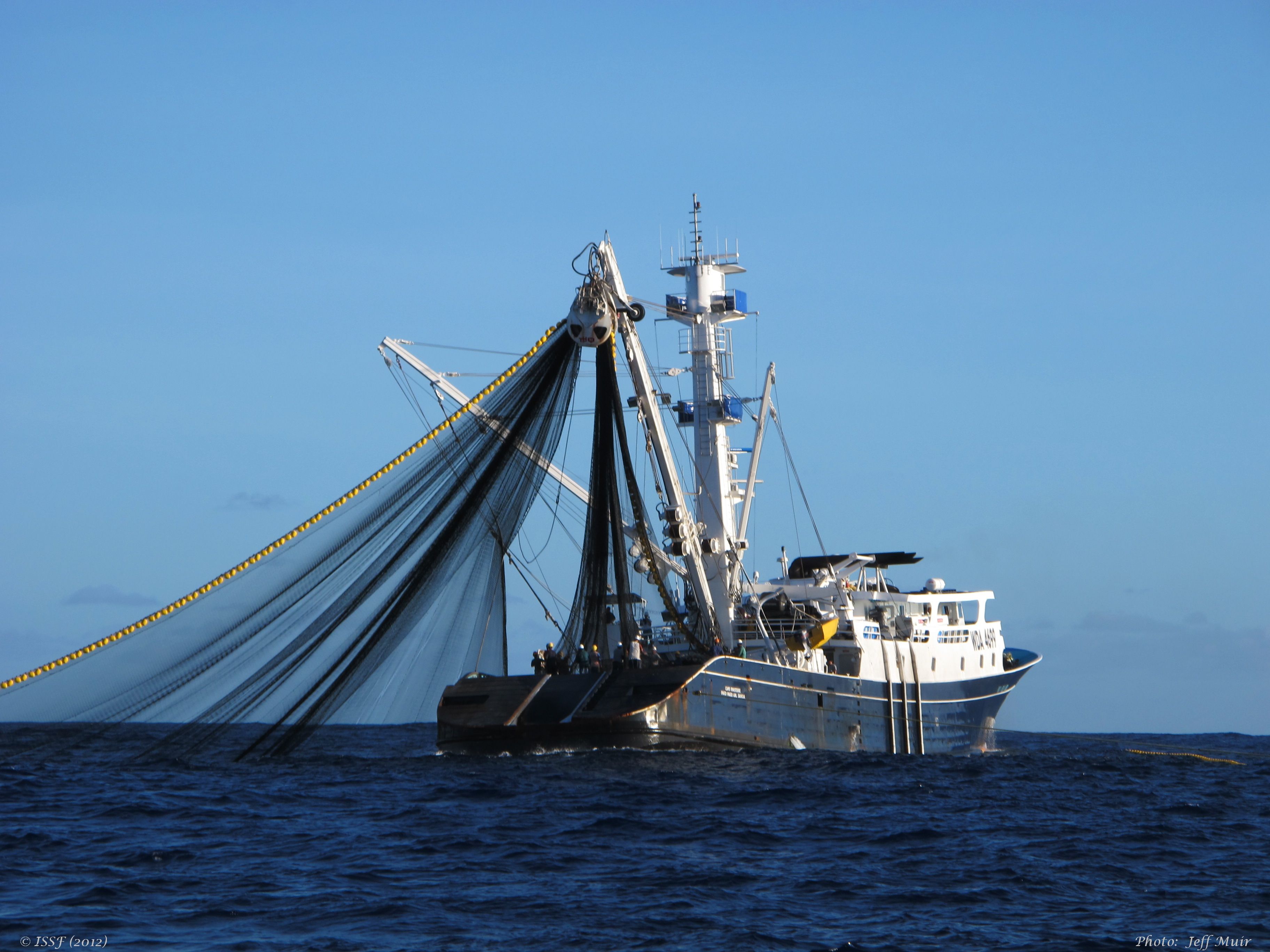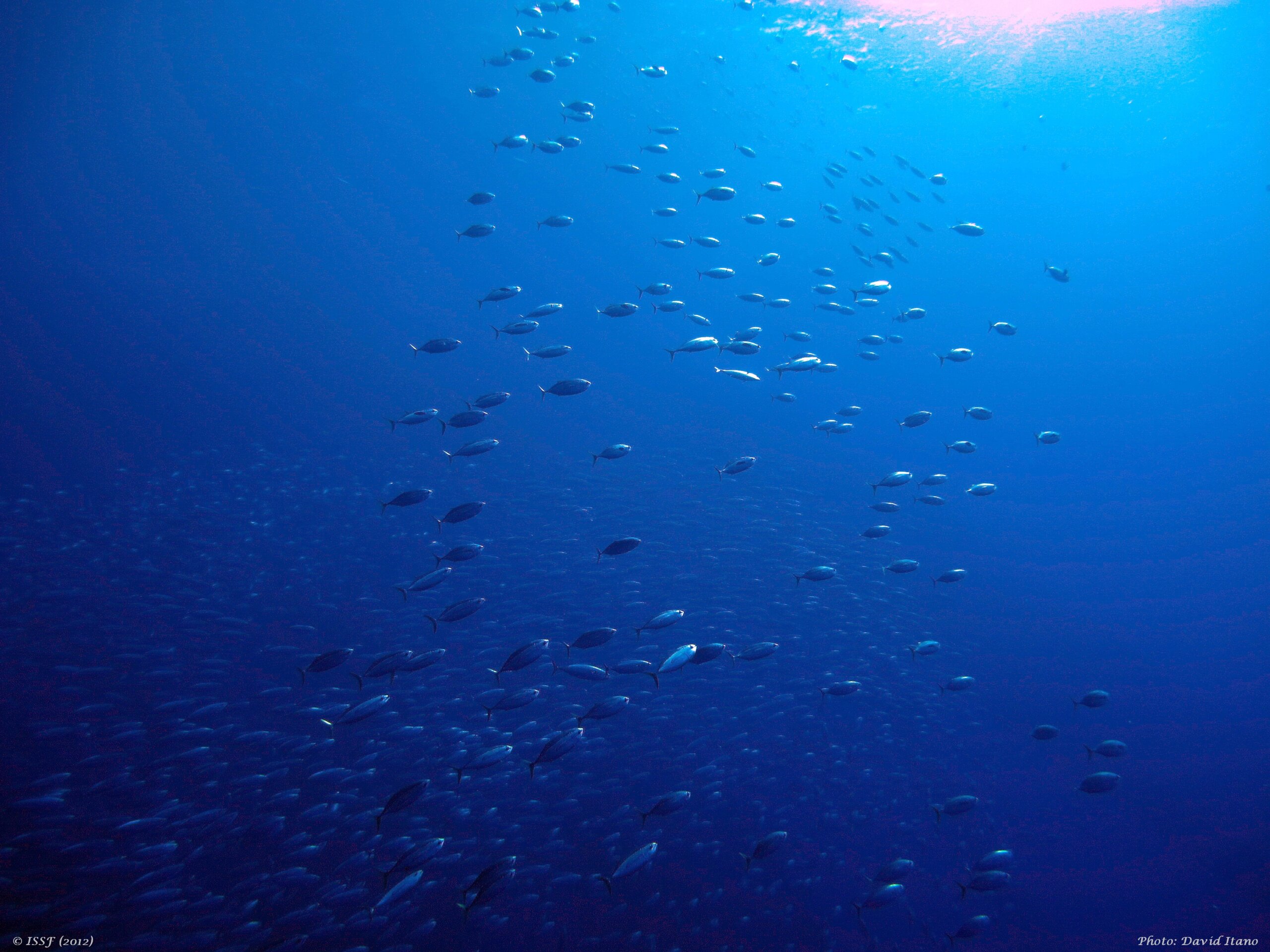
Leveraging Technology for Sustainable Tuna
ISSF and WWF staff are preparing to attend the annual meeting of the Inter-American Tropical Tuna Commission (IATTC), the group responsible for managing tuna fisheries in the Eastern Pacific Ocean, in Bilbao, Spain, this month.
As we do, we’re recalling the good outcomes from last year’s meeting, where important WWF and ISSF “asks” to the Commission consistent with scientific advice were met, including:
- The adoption of technical definition of a non-entangling FAD design
- The adoption of a binding measure to ensure the safety at sea for human observers, including those on carrier vessels
- Requiring IMO numbers for all fishing vessels of more than 12m
The Commission meeting did fall short, however, on a number of important issues like increased observer coverage for the longline fleet and smaller purse seiners; strengthened protection for sharks and sea turtles; and provision of raw FAD buoy data to the IATTC that are received by original users like vessels or fishing companies.
That’s why 2019 position statements from ISSF and WWF urge action on these topics, among other important issues.
Why Electronic Monitoring and Reporting?
Electronic monitoring and reporting (EM/ER) has been effectively implemented in longline and purse seine fisheries for at least two decades. And now thanks to improved technology and decreasing costs, it can be broadly expanded across fleets to play a viable role in attaining 100% observer coverage, thereby strengthening fishery data collection and monitoring.
EM/ER can provide robust scientific data to meet multiple management needs: the development of effective conservation and management decisions and harvest strategies; and the monitoring of implementation of these decisions, as well as of bycatch mitigation measures regarding sea turtles, seabirds, sharks and rays.
Further, electronic monitoring systems on tuna vessels can deliver essential quantitative data on FAD deployments, designs, sets and catch per effort — as a complement to human observer reporting, or to increase overall coverage rates. (IATTC’s current observer requirement for longliners is, after all, is still a paltry minimum of 5%, and small purse-seine vessels do not have to carry observers. We urge IATTC to increase these coverage rates to 100%.)
Even on large scale purse seine vessels in the IATTC region, with 100% human observer coverage, EM systems can capture information that is difficult for human observers to gather, such as seeing all FAD deployments and bycatch handling on the deck, or sampling from larger catch volumes in the net to estimate tuna species and size composition. Last year, IATTC’s own scientific staff sounded the alarm about the growing number of FAD sets. A better understanding of FAD deployments, as well as more complete information on FAD numbers and FAD sets per vessel, will help IATTC develop and implement more targeted, science-driven management measures.
As a research scientist and a fisheries manager, respectively, we are eager for EM to be implemented in the EPO for yet another reason, which won’t surprise anyone following this co-writer’s research in recent years. EM technology can monitor the use of non-entangling (NE) FAD designs — long advocated by ISSF and WWF — as well as the eventual use of less-harmful and biodegradable FADs.
Finally, EM can shed light on at-sea transshipment activities. At-sea transshipment has grown by 67% between 2012 and 2017 in the IATTC Convention Area, with bigeye and albacore tuna — two major commercial species — making up a large majority of the transfers.
While transshipment has increased, IATTC management regulations have not kept pace with best practices. For instance, the IATTC regulations, last updated in 2012, do not require carrier vessels to be flagged to a Contracting Party or Cooperating Non-Member; reports to be submitted in near-real time; or carrier and observer reports to be shared with appropriate authorities. EM can be a solution here as well.
Guidance for Implementing Electronic Monitoring
ISSF and WWF are asking IATTC to make accelerated progress on electronic monitoring and reporting. We’re urging IATTC to follow the recommendations of its Scientific Advisory Committee and the Joint Tuna RFMO FAD Working Group to develop electronic monitoring and reporting standards for longline and purse seine vessels, ultimately achieving 100% observer coverage in the longline fishery and for all vessel classes in the purse seine fishery.
A recent ISSF report, ISSF 2018-04: Minimum Standards for Electronic Monitoring in Tropical Tuna Purse Seine Fisheries, recommends best practices for electronic monitoring systems (EMS), including:
- EMS should be tested and certified by a third party.
- EMS should be tamper proof and able to capture four months of data at minimum.
- EMS must be independent from the crew during a trip (except for system maintenance). EMS software should allow the effective, efficient review of images.
Many of these recommendations are relevant to longline fisheries as well (see ISSF 2016-07: Application of Electronic Monitoring Systems in Tuna Longline Fisheries. International Workshop).
We urge IATTC delegations to recognize the importance of this work to ensure that fisheries in the region can continue to provide reliable jobs, consistent supply of food, and viable business and development opportunities.
All RFMOs must continue to make demonstrable progress in carrying out their mandates to sustainably manage tuna resources for the long term. We stand ready to continue to work with all IATTC members to support their efforts and look forward to continued collaboration with all stakeholders.
Dr. Gala Moreno is an ISSF scientist-consultant, and Pablo Guerrero is Director of Fisheries for WWF-Ecuador.


